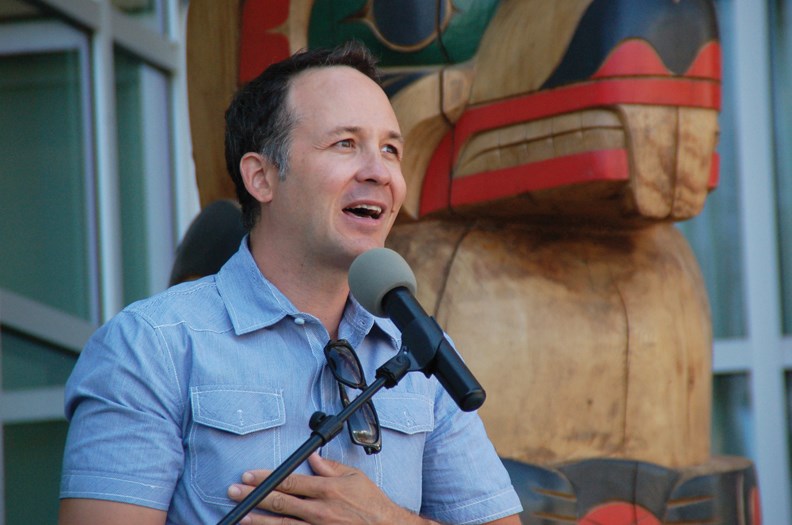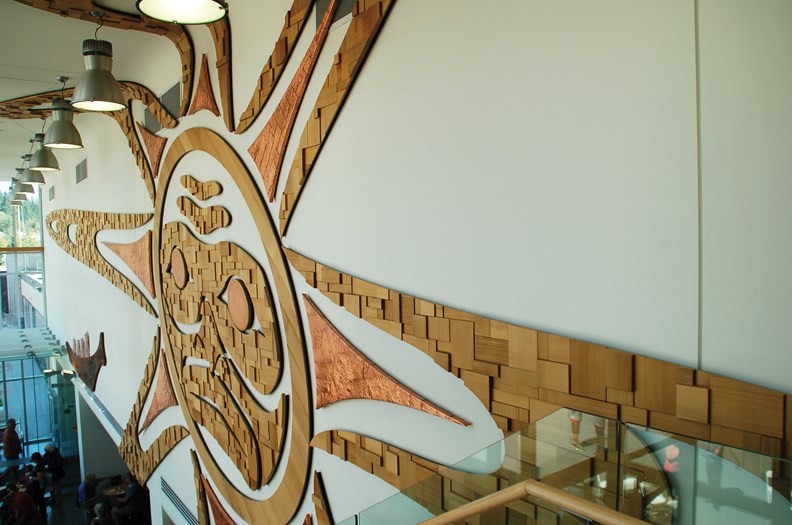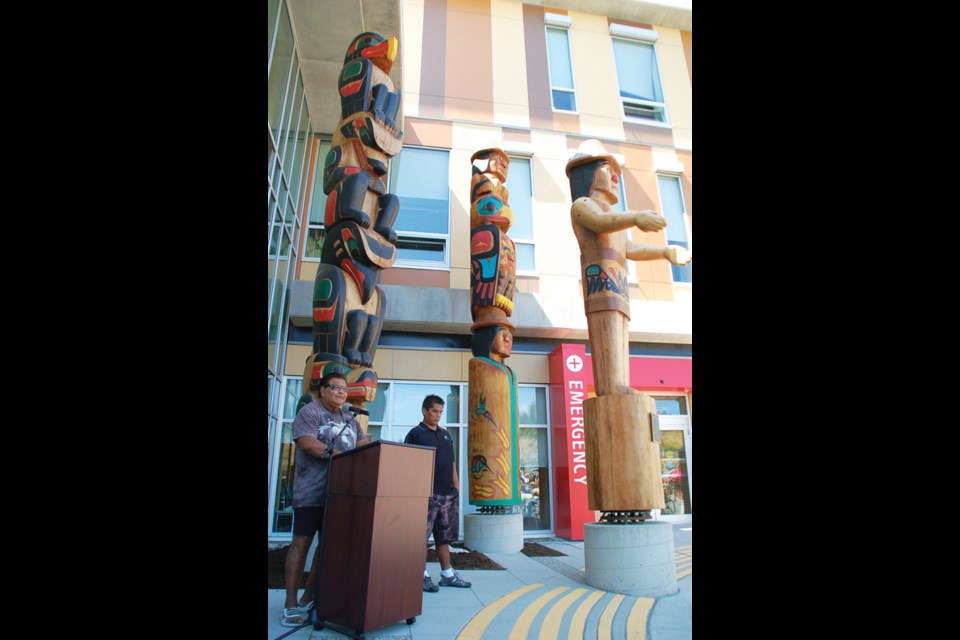The Sunshine Coast community learned the meaning of three new totem poles and a First Nations mural that now grace the entrance to Sechelt (shíshálh) Hospital during a dedication ceremony held July 20.
“The poles not only have spiritual meaning, but they also represent the completion of the second phase of our new hospital expansion,” noted Vancouver Coastal Health (VCH) director for the Sunshine Coast, Lauren Tindall, at the event.
Sechelt Nation carvers Tony Paul and Dion Louie were on hand to explain their totem poles, as was mural artist Shain Jackson.
Louie’s pole features an eagle, wolf, raven and beaver. He asked friend Robert Joe to explain his work to the crowd assembled.
“We all have our meanings. The eagle shows great strength, it shows great leadership, it shows great prestige,” Joe said.
“The wolf also shows leadership, intelligence, and a strong sense of family. The raven is creation, knowledge, humour, and also known as the trickster in many First Nations. And the beaver is creative, artistic and determined.”
Paul was responsible for carving the other two totem poles, which he titled the Welcome Pole and the Healing Pole.
“Like all artists, I carve to express my inner feeling. I want to bring to life the traditional art of the shíshálh Nation and to bring these cultural symbols to a worldwide audience for their understanding and appreciation,” Paul said. “Totem poles are a declaration, a document.”
The Welcome Pole carved by Paul features a figure with open arms facing those who approach the hospital.
“It’s representing welcome with open arms. That there’s no fear, no aggression, no weapons in hands. His hands are wide open telling you to ‘please come in. We will take care of you in every which way we can,’” Paul said.
The carver’s other pole consists of a watchman, an eagle with a sun on its chest and a human figure wrapped in a blanket.
“The watchman at the top ensures the protection of the area and premises,” Paul said.
“The Eagle is strength, power and vision. It protects the spirit of the body, representing health and wholeness. The sun is on the chest of the eagle. Its warmth radiates healing and peace. It is the source of life abundance, of all living things on Mother Earth.”
Paul went on to say the human figure represents all of the hospital workers who care for patients in one way or another.
“And it’s wrapped by a blanket. When you’re wrapped by a blanket it signifies that you are being honoured for the work that you are doing,” Paul said.
He noted the hummingbirds painted on the blanket also held special meaning.
“Hummingbirds in our Sechelt culture represent healing. It fulfills the Creator’s promise that to those who suffer injury or loss all shall be restored. It represents love and blessing, and is a spiritual messenger,” Paul said.

Jackson noted his mural, which was created with the help of students using only recycled materials, may appear to give most importance to the large sun, which represents regeneration, growth and new beginnings.
“But the centre piece in this to me is really the canoe. In our culture the canoe symbolism is about working together,” Jackson said, noting the four canoeists depicted represent unity in diversity.

“When we look at any culture we’re stronger together.”
On hand for the dedication ceremony was B.C. regional Chief Shane Gottfriedson, who said he wanted to witness the “historic moment” for himself, and chair of the First Nations Health Council Doug Kelly.
“The artwork that’s being left here is an opportunity for people to understand that we live in two very different worlds but we need to look after one another together,” Kelly said.
VCH chief operating officer for the coastal region, Mike Nader, said the First Nations art will have a positive impact on health outcomes at the hospital.
“Where we have environments that are filled with art and culture and tradition, we see an environment where people get healthier sooner. They recover faster,” Nader said.



